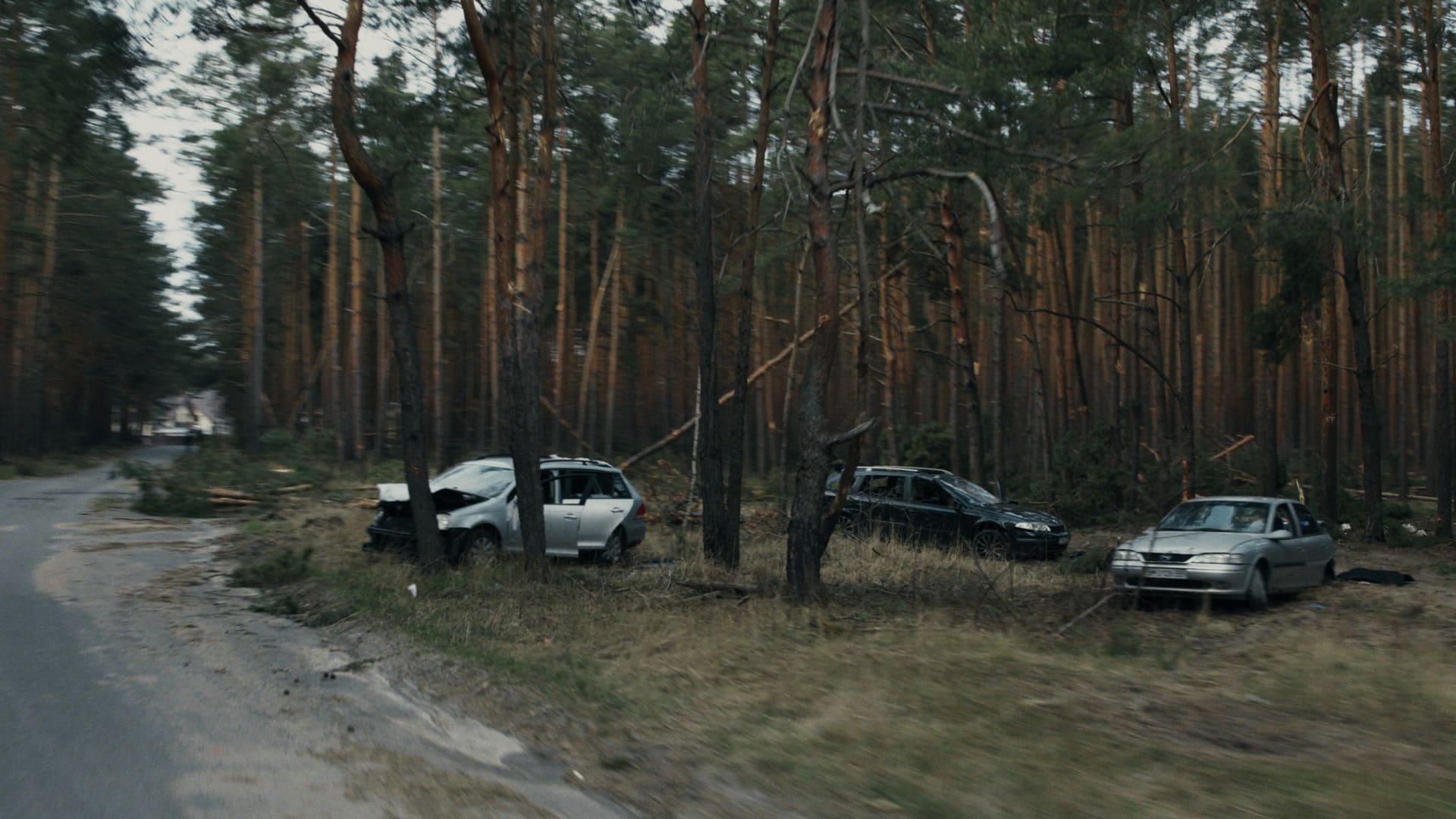
What are you required to do after a car accident in Washington, and what does the law say about who pays, and when?
From minimum insurance requirements to how fault is assigned, Washington car accident laws outline what drivers must do, what options are available for injured people, and how long they have to act.
Below, we cover key rules that apply after a collision in Washington, including liability, insurance claims, and legal deadlines.
Minimum Insurance Requirements in Washington
All Washington drivers must carry a minimum level of car accident liability insurance. As of 2024, the required minimums are:
- $25,000 for bodily injury or death per person,
- $50,000 total per accident for bodily injury or death, and
- $10,000 for property damage.
This coverage only applies to harm you cause. It does not protect your own vehicle or injuries in an at-fault crash.
Washington also allows drivers to satisfy financial responsibility in other ways, such as with a certificate of deposit or liability bond. However, most drivers use a traditional auto insurance policy.
Optional Coverages to Consider
Washington drivers also have the option to carry additional protections, such as:
- Personal Injury Protection (PIP)—helps pay for medical expenses, lost income, and funeral costs, regardless of fault;
- Uninsured/Underinsured Motorist Coverage (UM/UIM)—covers your losses if the at-fault driver doesn’t have enough (or any) insurance; and
- Collision and Comprehensive Coverage—pays for your vehicle’s repair or replacement, regardless of fault or damage caused.
Though not required by law, these optional coverages can offer critical financial protection in severe or complex accidents.
Washington Is an At-Fault State
Washington is considered an at-fault or tort state for car accidents. In other words, the person who causes the accident is financially responsible for the resulting damage.
Washington’s at-fault car accident system affects how claims are handled and who pays for expenses like medical bills, vehicle repair or replacement, lost wages, and pain and suffering.
If you’re injured or your car is damaged, you generally have three options in Washington:
- File a claim with your own insurance company, if you have coverage like collision or MedPay;
- File a “third-party” claim with the at-fault driver’s insurance company; or
- File a personal injury lawsuit directly against the at-fault driver, especially if insurance doesn’t fully cover the losses.
Washington’s fault-based system gives you more flexibility than a no-fault model. However, it also means that proving liability matters for getting compensation, sometimes more than most people expect.
How Fault Is Determined in Washington
Proving who caused the accident is crucial under Washington’s at-fault system. Insurance companies (and courts, if necessary) rely on several forms of evidence to make fault determinations, including:
- Police reports,
- Eyewitness statements,
- Photos from the accident scene,
- Vehicle damage assessments,
- Traffic camera footage or dashcam video, and
- Cell phone records (in distracted driving cases).
Sometimes the answer to the question of fault is clear. But in many cases, both drivers played a role in what happened. That’s where Washington’s comparative fault rule comes in.
Washington’s Comparative Fault Rule
Washington follows a legal doctrine known as pure comparative negligence. That means if you’re partly to blame for the accident, you can still recover compensation, but your payout is reduced in proportion to your share of the fault.
Let’s say a jury finds your total damages from a crash are $100,000 for medical bills, lost wages, and pain and suffering. If you’re found to be 20% at fault, you could still recover $80,000. If you were 40% at fault, you could receive $60,000, and so on.
Unlike some states, Washington doesn’t have a fault threshold that can disqualify you from compensation. As long as you’re not 100% responsible for a crash, you can still file a claim and recover damages.
For example, imagine you were driving just over the speed limit when another driver ran a red light and hit your car. The insurance company argues you share some responsibility because your speed made the crash more severe. After reviewing the evidence, the adjuster determines you’re 10% at fault.
Your full damages total $50,000, but under Washington’s comparative fault rule, you’d recover $45,000.
That 10% fault deduction may not seem like much. However, insurers often try to shift as much blame as possible to reduce what they owe. That’s why it’s important to gather strong evidence early and work with a Washington car crash lawyer who knows how to challenge unfair fault claims.
Washington’s Statute of Limitations
The law sets strict time limits on how long you have to take legal action after a crash. In Washington, you have:
- Three years from the date of the accident to file a personal injury lawsuit, and
- Three years to file a property damage claim.
While insurance claims should be filed immediately, a lawsuit must be filed within this three-year window if negotiations fail or the other party denies liability.
Exceptions to the Statute of Limitations
There are a few exceptions to this rule. For example, if the injured person is a minor, the three-year clock may not begin until they turn 18. In cases involving government entities (like city-owned transit vehicles), you may have to first file a formal claim notice within a much shorter time, such as 60 days.
These exceptions show how important it is to speak with a Washington car accident attorney early, even if you think you have plenty of time to act. Missing a procedural step can cost you your entire case.
What to Do After a Car Accident in Washington
Your actions after a car crash can affect your safety and your legal claim. Here’s what Washington car accident laws (and good judgment) say to do.
1. Stop and Remain at the Scene
You’re legally required to stop your vehicle after any accident. If you leave the scene when injuries are involved, you could face criminal charges. Stay put, turn on your hazard lights, and check for danger before stepping out of your vehicle.
2. Check for Injuries and Call 911
Check yourself and others for injuries, and call 911 to report the accident. Even if injuries seem minor, getting help on the scene is essential. Emergency responders can assess injuries, direct traffic if necessary, and begin an official report.
3. Exchange Information
Get the other driver’s full name, phone number, license number, and insurance policy details. Be sure to collect their license plate number and the make and model of their vehicle. If there are any witnesses, ask for their contact information, too.
4. Document the Scene
Use your phone to take detailed photos and videos of the crash scene. Capture vehicle damage, road conditions, skid marks, traffic signs or signals, and any visible injuries. The more evidence you collect now, the stronger your insurance or legal claim may be later.
5. File a Collision Report (If Required)
Washington car crash laws require you to file a Vehicle Collision Report within four days if:
- Anyone is injured,
- Someone is killed, or
- Property damage appears to be $1,000 or more.
You can file the report online through the Washington State Patrol website or by mail.
If police officers respond to the scene and file an official report, you’re usually not required to complete one yourself. But if no officer arrives, the legal obligation falls on you.
Be aware: This report becomes a part of the official record and can help later if there’s a dispute over who caused the accident or whose insurance should apply.
6. Seek Medical Care, Even If You Feel Fine
Some injuries, like whiplash, concussions, or internal trauma, may not show symptoms right away. Going to see a doctor helps catch potentially serious conditions early and documents them for your insurance claim. Waiting too long to get care can impact your recovery and give insurers an excuse to question your case.
When to Contact a Car Accident Lawyer
Car accidents can range from minor inconveniences to life-changing tragedies. The more serious the impact, the more critical it is to understand your rights under Washington auto accident laws.
You should contact a car accident lawyer if:
- You’ve suffered serious injuries or expect long-term medical care;
- The insurance company is denying your claim or offering far too little;
- The other driver is blaming you, or liability is unclear;
- A government or commercial vehicle was involved in the crash;
- The at-fault driver was uninsured or underinsured; or
- You’re nearing Washington’s legal deadline for filing a claim.
These situations often involve legal complexity, aggressive insurance tactics, or disputes over fault, and going it alone can leave you undercompensated or overwhelmed. A skilled Washington car accident attorney can help protect your claim, handle communication with insurers, and fight for full compensation on your behalf.
Speak with a Washington Car Accident Attorney Today
At Brett McCandlis Brown & Conner, we’ve been helping injured Washingtonians recover physically and financially since 1977.
Whether you’re dealing with hospital bills, insurance runaround, or a serious injury that’s changed your daily routine, we’re here to help you deal with it head-on and demand the compensation you deserve under Washington car accident laws.
Call us today or send us a message online to schedule a free, no-obligation case review. There are no upfront costs, and there are no legal fees unless we win.


